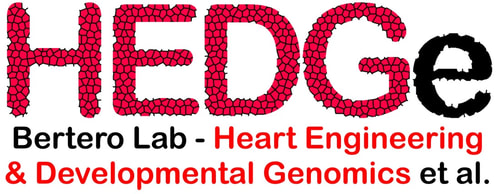Our current focus is the role of three-dimensional chromatin organization in heart development and disease.
We are also building novel genetic tools to probe the structure-function relationship of chromatin compartmentalization.
Our work mainly relies on genetic engineering with CRISPR/Cas9, differentiation of human pluripotent stem cells into cardiomyocytes (hPSC-CMs), generation of 3D-engineered heart tissues, determination of nuclear architecture and function with genomic and imaging assays, and analysis of cardiac physiology.
Click on the links above or on the images below to explore our research interests in more detail.
Why the et al.?
We are immensely worried about the future of our planet in the face of rapidly advancing climate and ecological disasters due to unsustainable human activities. Besides striving for a more sustainable way to do research (i.e recycle and reuse) and travel (i.e. minimize and carbon offset emissions), we place what know-how we have to the service of climate defense. In this light, we wish to try helping combat climate change through cellular agriculture.
We are also building novel genetic tools to probe the structure-function relationship of chromatin compartmentalization.
Our work mainly relies on genetic engineering with CRISPR/Cas9, differentiation of human pluripotent stem cells into cardiomyocytes (hPSC-CMs), generation of 3D-engineered heart tissues, determination of nuclear architecture and function with genomic and imaging assays, and analysis of cardiac physiology.
Click on the links above or on the images below to explore our research interests in more detail.
Why the et al.?
We are immensely worried about the future of our planet in the face of rapidly advancing climate and ecological disasters due to unsustainable human activities. Besides striving for a more sustainable way to do research (i.e recycle and reuse) and travel (i.e. minimize and carbon offset emissions), we place what know-how we have to the service of climate defense. In this light, we wish to try helping combat climate change through cellular agriculture.
Chromatin Biology
Heart Development
Heart Disease
Technology Development





